BACK TO LESSON PLANS
Social Justice Quilt
Time: Two weeks (10hrs.)
Learning Statement/Objectives:
This is a cross-curriculum project between the Painting & Drawing class and International Studies classes. The International Studies classes are writing poems based on their studies of major acts of genocide that have taken place in the twentieth century and more recently. Once completed these poems are distributed to the students of Drawing & Painting who will make visual interpretations of them. The Drawing & Painting students will then be introduced to the art of quilting. They will print their design onto fabric which will then be accessorized with color and appliqué and then sewn together with each of their classmates’ squares to make one large quilt. This quilt will then be on public display along with the poems. The public will be able to read the poem and see the corresponding image.
Connecting to the Quilt Index:
There are many quilts in the Quilt Index dealing with social justice issues. Step One of the Process for this lesson (below) asks that you use the Quilt Index to show and discuss quilts with social justice themes and give students website directives for doing their own research, including research on the Quilt Index.
Quilts you might consider for the PowerPoint presentation include:

War: So Many Twin Towers
Diana N'Diaye
Washington D. C.
2007
Collection of the Michigan State University Museum acc.#2008:120.1
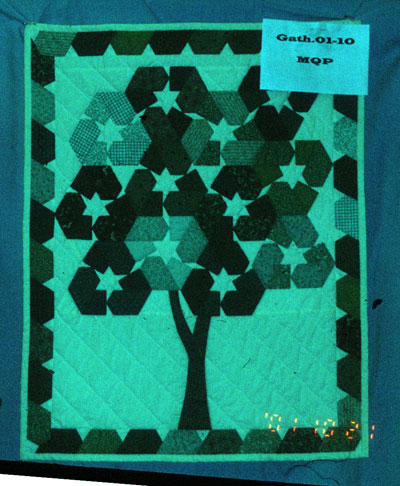
Environment: Recycled Greens
Jean Ebendick
Wyandotte, Wayne County, Michigan
1993
Private Collection
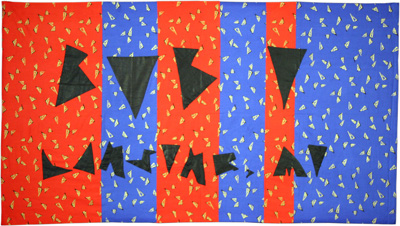
AIDS Awareness: Bob I (from the NAMES Project)
Lynne Swanson and Chris Carmichael
East Lansing, Ingham County, Michigan
1993
Collection of the Michigan State University Museum acc.#1996:52.1
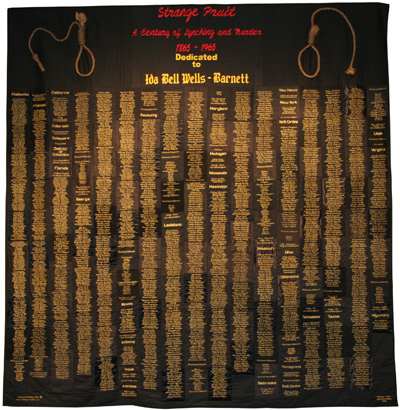
Hate Crimes: Strange Fruit: A Century of Lynching
April Shipp
Auburn Hills, Oakland, Michigan
2003
Private Collection
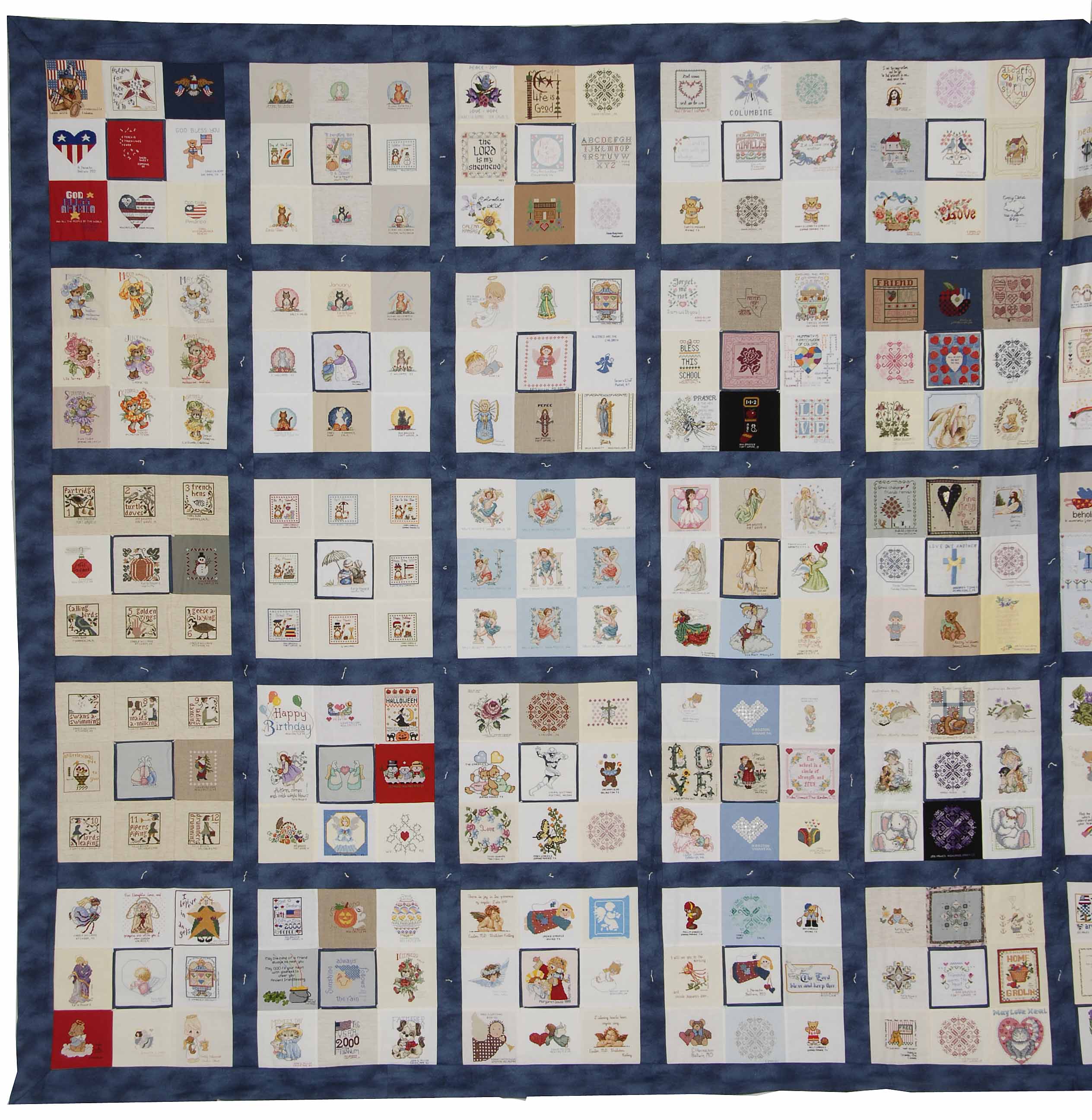
Violence: Columbine High School Healing Quilt #1
Various quiltmakers, quilted by Kathie Baumgardner
City, County, Michigan
2000
Collection of the Rocky Mountain Quilt Museum acc.#PQ.2002.015.001
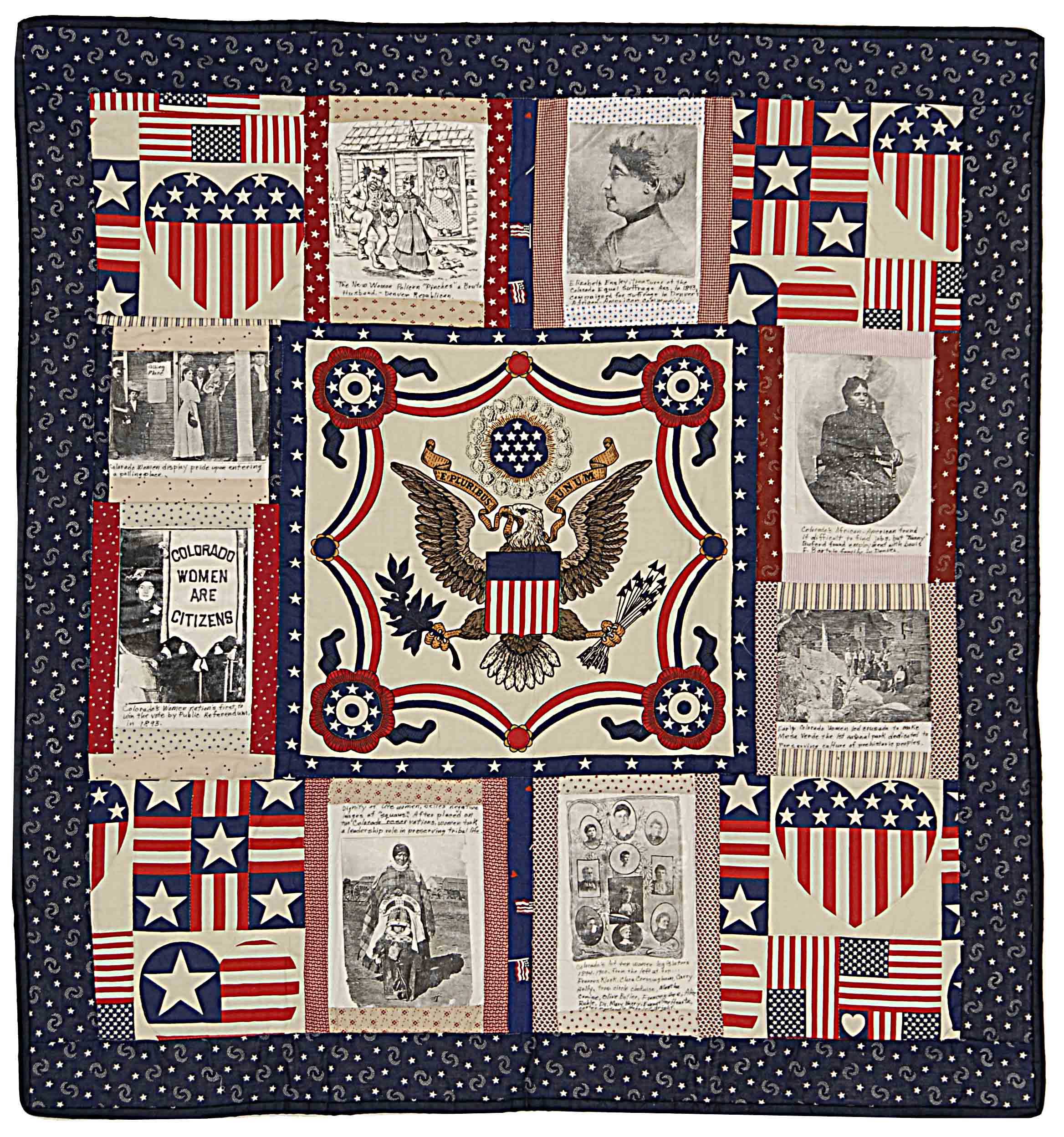
Women’s Rights: Women’s Suffrage Quilt
Margie Mudd
1993
Collection of the Rocky Mountain Quilt Museum acc.#PQ.1993.009.001
Searches you might suggest for your students to use on the Quilt Index site
include: Searching the text "human rights" in the "Publications, Exhibitions or Contests"
box on the search page. “Quick Search” keywords: rights, freedom, recycle.
Context:
Social justice and international relations, genocide, the communal act of quilting, etc.
Vocabulary:
Social justice: sometimes called civil justice, refers to the concept of a
society in which justice is achieved in every aspect of society, rather than
merely the administration of law. It is generally thought of as a world
which affords individuals and groups fair treatment and an impartial share
of the benefits of society. (Wikipedia)
Appliqué: verb – to apply.
Materials:
• Sketchbooks
• Sharpie markers
• Regular Pencils
• Charcoal Pencils
• Erasers
• One 12"x12" sheet of drawing paper
• Screen printer (Hot press scanner)
• Fabric ink
• 13"x13” square piece of fabric
• Large silk screen
• Squeegee
• Appliqué of various sorts
• Thread and needles
• PhotoShop application and web access
Process:
• Use the Quilt Index to show and discuss quilts with social justice themes and give students directives for doing their own research on the site.
• Give students poems on social justice themes from International Relations class.
• Students sketch ideas in their sketchbooks and create a layout.
• Students find images on internet to compliment their designs and layout.
• Students create a 12"x12” black/white design.
• Students feed 12"x12” design into hot press silk screen scanner.
• After screen is printed, students will affix it to a larger screen and then pull a color of their choice through it with a squeegee onto a 13"x13” square piece of fabric then let dry.
• Students will sew their square design into the larger quilt.
• Final critique.
Evaluation:
• Did students learn about a social justice issue they might not have known to exist?
• Did students learn something about quilting?
• Were students able to create a visually compelling design that tells us something about a social justice issue?
• Did students learn the process of silk screening?
• Did students see strategies in the final critique for creating even more dynamic designs in their own work in the future?
-
Documentation Project
Quilts and Human Rights Michigan State University
-
Museum
Michigan State University Museum Michigan Quilt Project
-
Documentation Project
Quilts and Health Michigan State University
-
Museum
Rocky Mountain Quilt Museum -
Documentation Project
Michigan Quilt Project Michigan State University
-
2007
So Many Twin Towe... N'Diaye, Diana
-
June 1993
Recycled greens Ebendick, Jean
-
11/1995
Bob I Carmichael, Chris; ...
-
2003
Strange Fruit: A ... Shipp, April
-
2000
Columbine High Sc... Quiltmaker, Various...
-
1993
Women's Suffrage ... Mudd, Margie
Load More